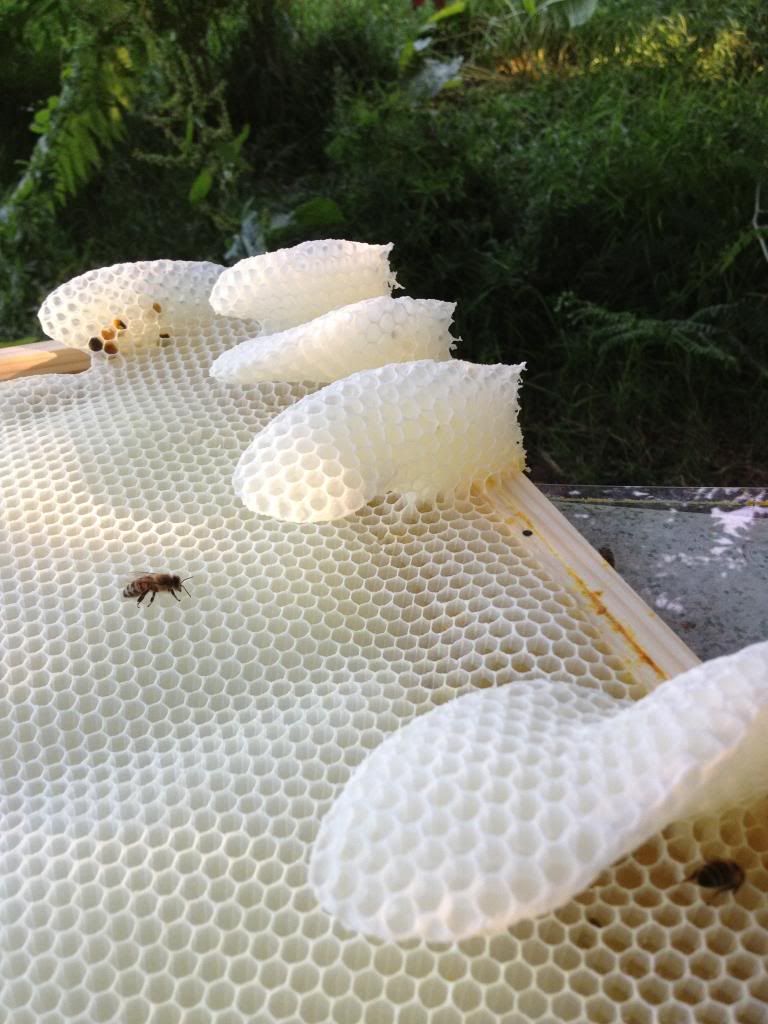I haven't read the post yet, but I looked at the attached images.
I notice that your wires are hanging quote loosely in the frames. You are aware that one can use a wire crimper to stretch them tight, right?
I also notice that (particularly in one image) the bees don't build comb on the wire itself and don't build or use cells where the wire is. This phenomenon also occurs in frames with wax foundation -- you can often see where the wires are because the bees don't use those cells.
Well, the purpose of the wires is to strengthen the comb, right? But it looks like the wire in your frames actually weaken the comb, since the bees seem to avoid it. And your wires are hanging loosely anyway. Wouldn't it be better to use something else to strenthen the comb (e.g. one or two vertical dowels stuck to the top bar)?



















































